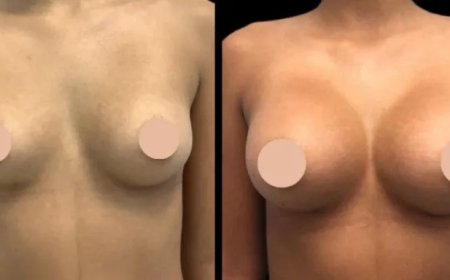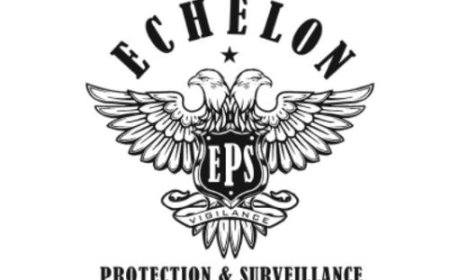Diagnostic Imaging Services Market Size & Growth 2034

Diagnostic imaging services are the silent architects of modern medicine, translating the bodys hidden narratives into actionable clinical insights. From routine chest radiographs to cutting?edge whole?body MRIs, these technologies inform?diagnoses, monitor therapies, and steer surgical decisions with unprecedented precision. In 2024, global revenues from diagnostic imaging services reached USD?600.40?billion, and momentum shows no sign of slowing. Patients demand faster, non?invasive answers; clinicians need higher?resolution detail; payers seek cost?efficient pathways; and innovators race to fuse hardware with data science. Against this backdrop, an analysis by Expert?Market?Research projects a sturdy 5.10?% CAGR through 2034, putting the market on course for USD?987.34?billion. The discussion that follows traces where those dollars are flowing, why growth looks sustainable, and how individual segments are reshaping health?care delivery worldwide.
Market Size Overview
Health systems everywhere face dual imperatives: expand diagnostic reach and contain procedural risk. Advanced imaging checks both boxes. Growth is anchored in expanding insurance coverage, fast?urbanizing middle classes in Asia, and an aging population whose chronic conditions demand recurrent scans. Meanwhile, the artificial?intelligence boom is transforming radiology into a data?rich discipline, automating mundane steps and flagging subtle anomalies faster than human eyes alone could manage. Together, these forces keep modality fleets busy and reimbursement pipelines healthy. Market consolidation among hospital groups, tele?radiology adoption, and public?private infrastructure programs in emerging economies further inflate topline numbersvalidating the robust billion?dollar trajectory highlighted above.
Market Share Distribution
Ownership of diagnostic imaging revenue is not monolithic; it fragments along both modality and geography:
-
North?America historically commands the largest slice, driven by deep payer pools, aggressive equipment refresh cycles, and prolific research output.
-
Europe follows closely, with single?payer systems emphasizing clinical guidelines that embed imaging into care pathways.
-
Asia?Pacific has grown the fastest over the last five years; rising disposable income, medical tourism hubs, and government?backed rural imaging schemes broaden access.
-
Latin?America, Middle?East, and Africa hold smaller but rapidly scaling shares, often piggybacking on mobile units and cross?border teleradiology contracts.
By modality, X?ray remains the workhorse thanks to its ubiquity and low cost, yet Magnetic Resonance Imaging and Computed Tomography together account for a disproportionately high revenue share because of their premium price tags and frequent clinical billing. Ultrasound dominates obstetric and point?of?care settings, while nuclear imaging enjoys entrenched demand in oncology and cardiology diagnostics.
Growth Drivers and Emerging Trends
Technological Advancements
The leap from purely analog films to cloud?native picture archiving has paved the way for more disruptive upgrades:
-
Photon?counting CT delivers higher resolution at lower radiation doses, widening its appeal for vascular and pediatric studies.
-
7?Tesla MRIonce the province of research labsnow edges toward routine neurology practice, mapping micro?structural changes in multiple sclerosis and traumatic brain injury.
-
AI?enhanced reconstruction algorithms slash scan times, enabling throughput gains of up to 40?% in high?volume centers.
Demand Factors and Patient Preferences
Rising patient literacy encourages people to question invasive biopsies where imaging?guided alternatives exist. Parallel growth in chronic diseases such as diabetes and heart failure ensures continual imaging follow?ups. Moreover, remote second?opinion services bring sub?specialist expertise to small hospitals, funneling additional reads through enterprise PACS platforms and boosting billing density per scan.
Regulatory Environment
Radiation?dose standardization is now embedded in policy frameworks across the EU and parts of Asia, nudging providers toward next?gen equipment. In the United?States, CMSs Appropriate Use Criteria mandate has begun tying reimbursement to guideline?based imaging orders, incentivizing data?driven workflow software and clinical decision support modules.
Case Studies and Recent News
Strategic partnerships illustrate how hardware vendors and service providers co?innovate:
-
RadNet recently integrated a cloud?based AI triage tool across 1.5?million annual mammography exams, trimming callback times and elevating cancer?detection rates in dense?breast cohorts.
-
Hitachi and a leading academic center piloted real?time MRI?guided focused?ultrasound therapy, demonstrating outpatient ablation of uterine fibroids with minimal anesthesia.
-
Shimadzu launched an ultra?lightweight mobile X?ray cart featuring built?in networking that pushes images directly to teleradiology reading rooms, accelerating emergency?department turnover by 15?% in the trial site.
Mergers also shape capacity: RAYUS?Radiology absorbed ten regional groups across the Midwestern United?States last year, expanding its footprint to 200+ outpatient centers and negotiating more favorable payer contracts.
Competitive Landscape and Market Dynamics
Price?sensitive regions rely on flexible ownership modelsequipment leasing, pay?per?scan, and vendor?managed service linesdiluting capital expenditure barriers. Major OEMs court independent imaging chains with turnkey solutions: bundled scanners, maintenance, and AI subscriptions. Smaller players differentiate through niche specializationthink musculoskeletal ultrasound or cardiac MRIoften operating inside multispecialty clinics to tap cross?referral synergies. Competitive rivalry remains high: reimbursement cuts lead providers to seek higher throughput; vendors respond with faster gantry rotation, dual?energy modes, and intuitive user interfaces that compress training time.
Segmentation Insights
By Imaging Modality
-
X?ray
-
Magnetic Resonance Imaging (MRI)
-
Ultrasound
-
Computed Tomography (CT)
-
Nuclear Imaging
-
Others
By Application
-
Cardiology
-
Gynecology/Obstetrics
-
Orthopaedics and Musculoskeletal
-
Oncology
-
Neurology and Spine
-
General Imaging
By End Use
-
Hospitals
-
Diagnostic Imaging Centres
-
Ambulatory Surgical Centres
-
Others
Regional Perspectives
-
North America
-
Europe
-
Asia Pacific
-
Latin America
-
Middle East and Africa
Each region shows distinct adoption curves. North America invests heavily in AI?enabled post?processing suites, while Asia Pacific prioritizes scalable ultrasound fleets for maternal?fetal health programs. Europes eco?design directives push low?power CT scanners, and the Middle East accelerates cross?border referral networks that stabilize specialist workloads.
Key Players
-
RadNet, Inc. (NASDAQ:?RDNT)
-
MedQuest Associates, Inc.
-
Hitachi, Ltd.
-
Shimadzu Corporation
-
Koninklijke Philips N.V.
-
RAYUS Radiology
-
Others
Looking Ahead
Continued fusion of imaging physics with machine learning, augmented?reality surgical guidance, and decentralized reading hubs promises to keep diagnostic imaging at the center of precision medicine. Providers able to align modality mix with population needswhile embracing data?driven quality metricsstand to capture an outsized share of the USD?987?billion opportunity forecast for 2034. For deeper quantitative granularity, policy forecasts, and sub?segment breakouts, readers may consult the comprehensive analysis available from Expert?Market?Research, a resource widely referenced by health?care strategists and investors alike.
Explore More Reports
Electronic Health Records (EHR) Market
Implantable Medical Devices Market
Allergic Rhinitis Epidemiology Forecast
About Us:
Expert Market Research is a leading market research firm delivering data-driven insights to the pharmaceutical, biotechnology, and medical device industries. Our comprehensive research solutions include market research reports, providing in-depth analysis of industry trends and competitive landscapes; drug pipeline reports, tracking drug development progress, clinical trials, and regulatory approvals; epidemiology reports, offering detailed disease prevalence and patient population studies; and patent reports, assessing intellectual property landscapes and innovation trends, among others.
Leveraging proprietary data, advanced analytics, and expert methodologies, we help businesses navigate complex markets, optimize strategies, and drive innovation. We empower clients with actionable intelligence, enabling them to make informed decisions and stay ahead in the rapidly evolving healthcare sector.
Media Contact:
Company Name: Claight Corporation
Contact Person: Roshan Kumar, Digital Marketing
Email: sales@expertmarketresearch.com
Toll-Free Number: US +1-415-325-5166 | UK +44-702-402-5790
Address: 30 North Gould Street, Sheridan, WY 82801, USA
Website: www.expertmarketresearch.comDiagnostic Imaging Services Market



































